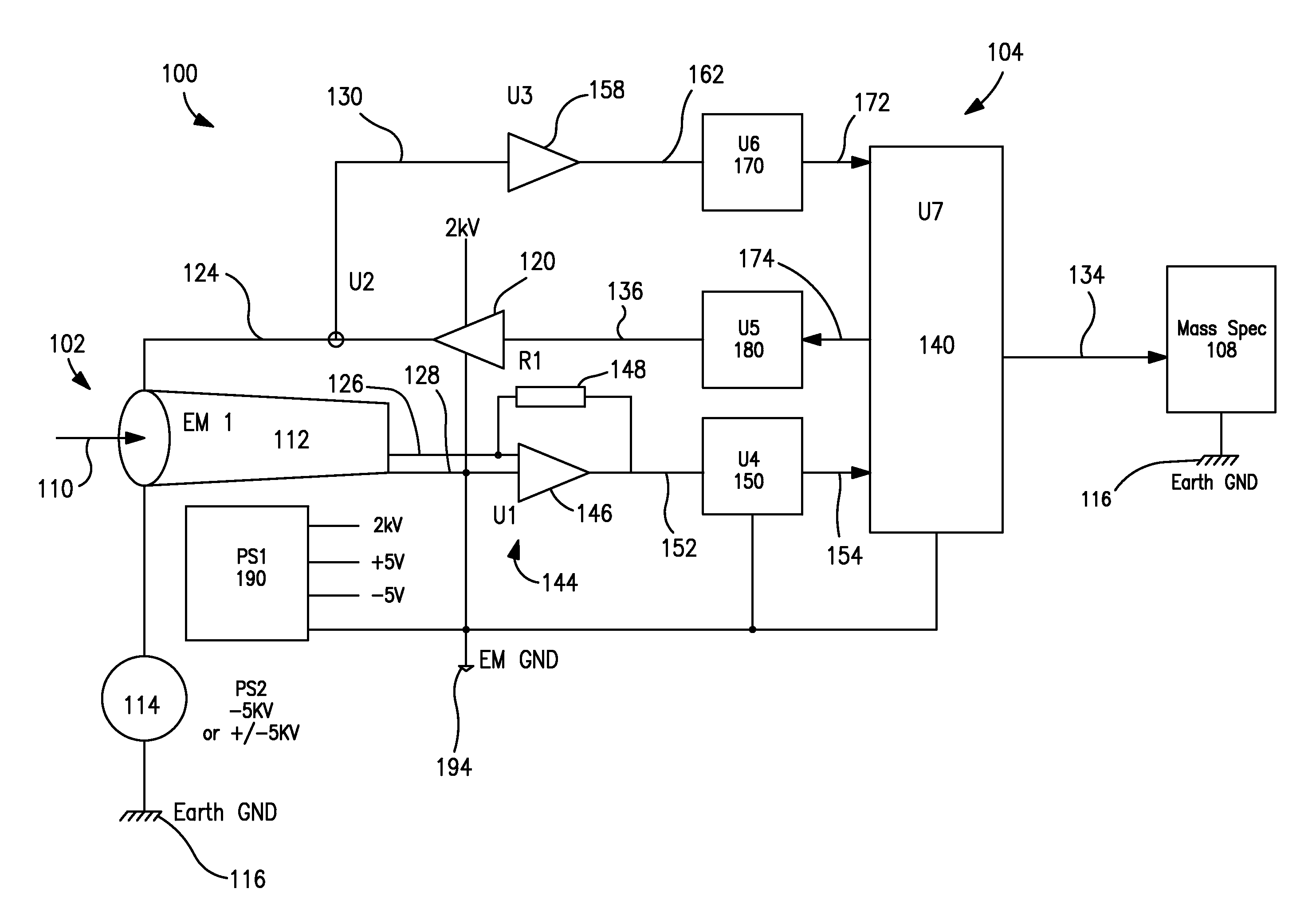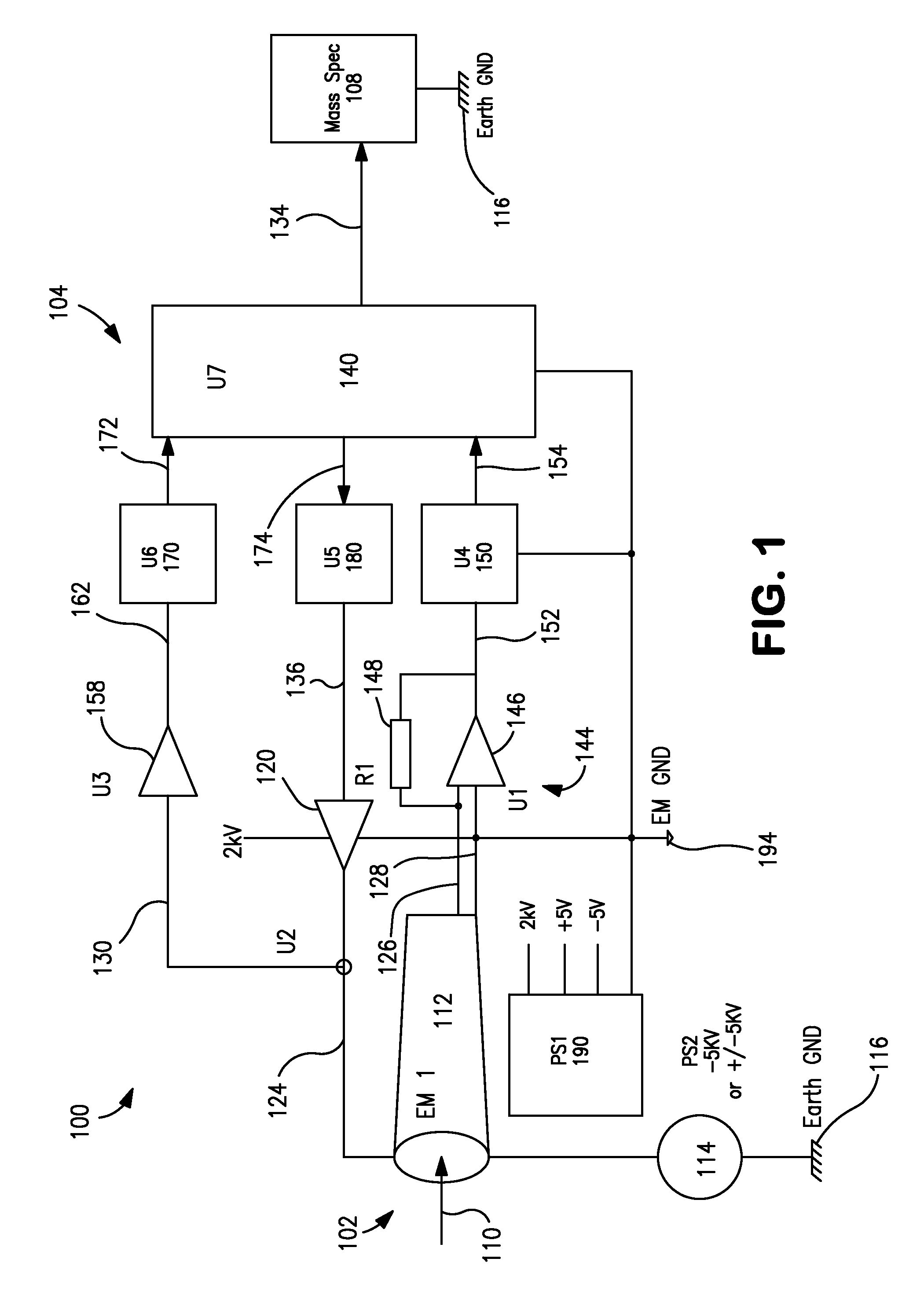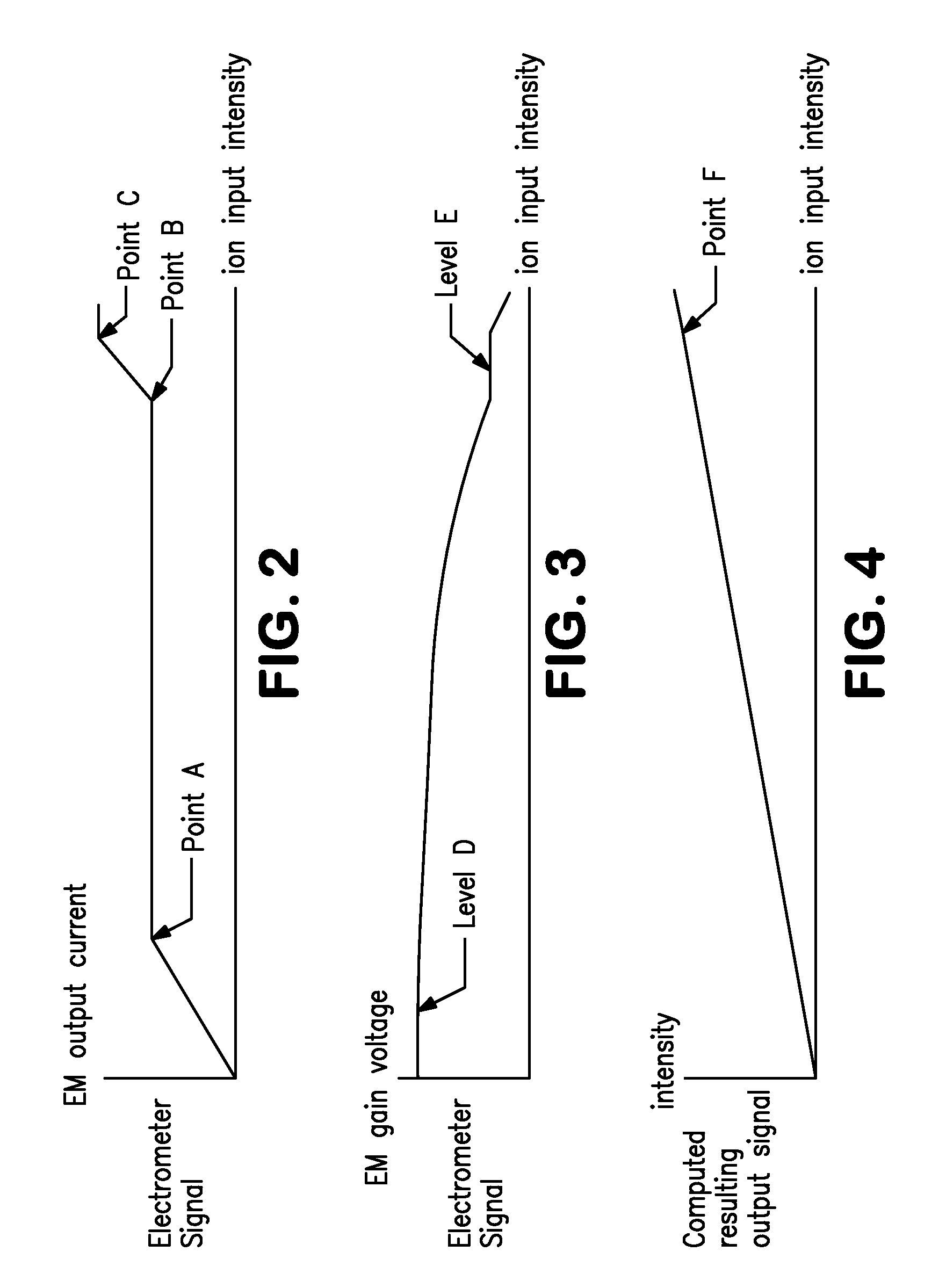Real-time control of ion detection with extended dynamic range
a real-time control and dynamic range technology, applied in the field of detection of ions, can solve the problems of stress or ageing of specialized materials, limited dynamic range of ion detector systems, loss of sensitivity,
- Summary
- Abstract
- Description
- Claims
- Application Information
AI Technical Summary
Benefits of technology
Problems solved by technology
Method used
Image
Examples
Embodiment Construction
[0021]The subject matter disclosed herein generally relates to dynamic adjustment of the gain voltage (also termed control voltage or drive voltage) applied to an ion detector to improve performance. Examples of implementations of methods and related devices, apparatus, and / or systems are described in more detail below with reference to FIGS. 1-5. These examples are described in the context of mass spectrometry. However, any process that utilizes a signal multiplier or like component in conjunction with the detection of ions may fall within the scope of this disclosure. Additional examples include, but are not limited to, vacuum deposition and other fabrication processes such as may be employed to manufacture materials, electronic devices, optical devices, and articles of manufacture.
[0022]FIG. 1 illustrates certain components of a mass spectrometry (MS) system (or apparatus, device, etc.), generally designated 100. The MS system 100 includes an ion detector 102, a signal processing...
PUM
 Login to View More
Login to View More Abstract
Description
Claims
Application Information
 Login to View More
Login to View More - R&D
- Intellectual Property
- Life Sciences
- Materials
- Tech Scout
- Unparalleled Data Quality
- Higher Quality Content
- 60% Fewer Hallucinations
Browse by: Latest US Patents, China's latest patents, Technical Efficacy Thesaurus, Application Domain, Technology Topic, Popular Technical Reports.
© 2025 PatSnap. All rights reserved.Legal|Privacy policy|Modern Slavery Act Transparency Statement|Sitemap|About US| Contact US: help@patsnap.com



